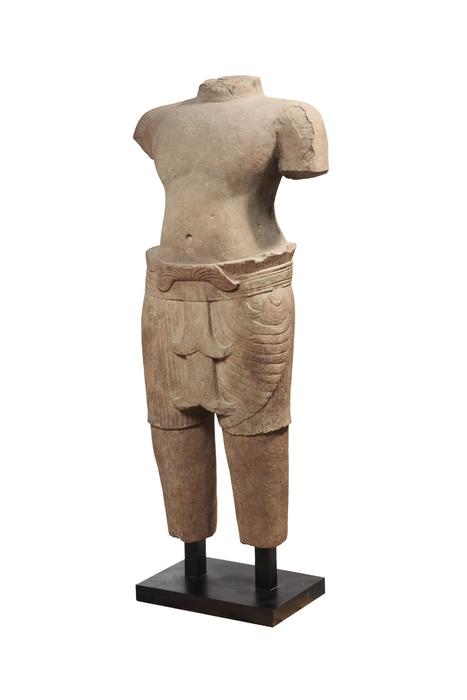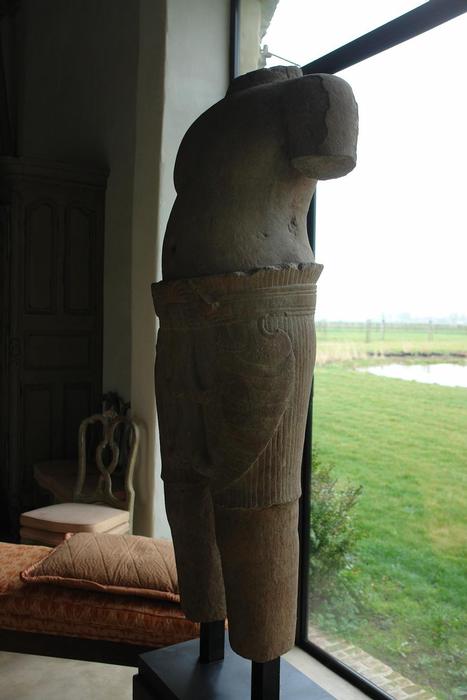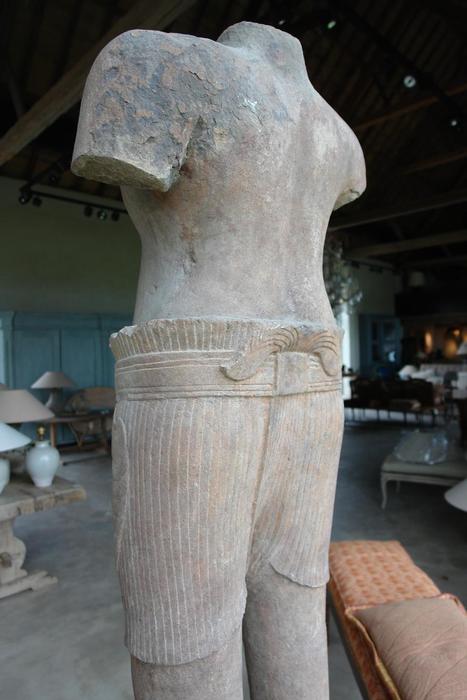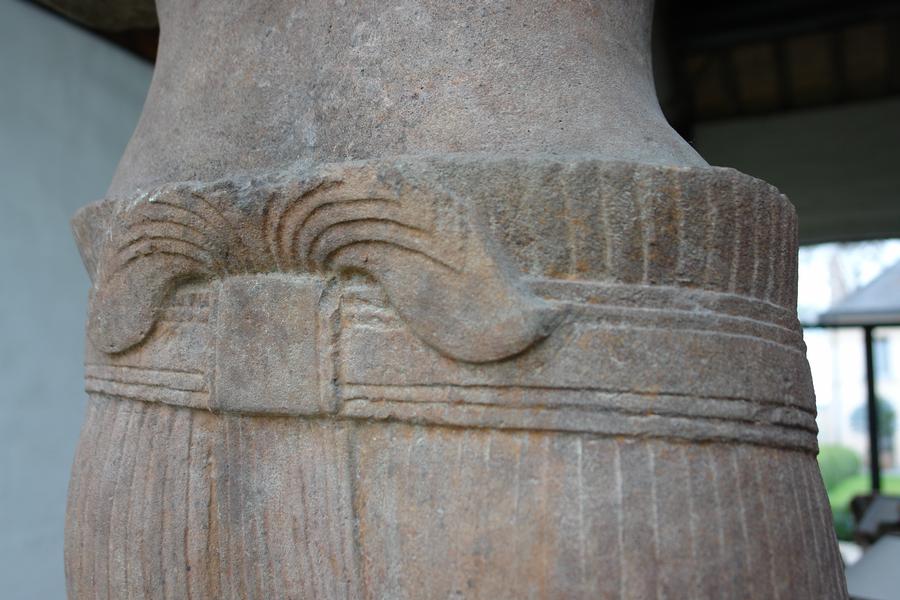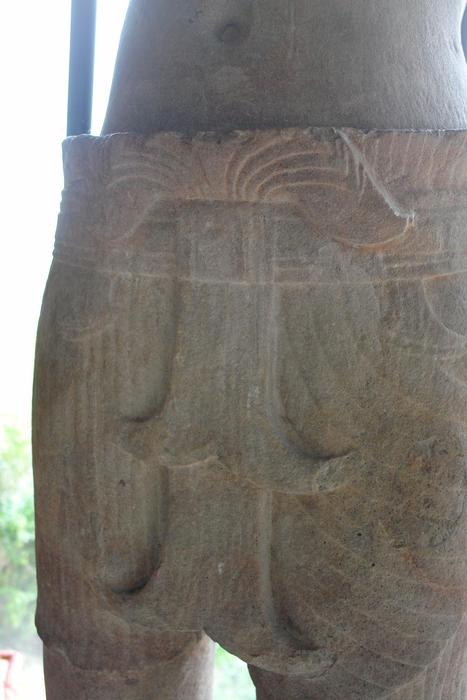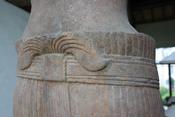Koh-Ker torso of a God in sandstone, second half of the Xth century
Cambodia, Khmer Art
The God wears a sampot which is double folded with an anchor at the backside, the upper edge is folded at the front side.
140 cm high x 65 cm wide x 35 cm deep (170 cm high incl stand)
References:
Statue of Vajimukha / Hayagriva with the same clothing in 'Angkor, Göttliches Erbe Kambodschas', exhibition catalogue 15/12/2006 - 09/04/2007 in the Kunst-und Austellungshalle der Bundesrepublik Deutschland in Bonn, n°39, p. 121
Another model of the Vajimukha / Hayagriva in the style Pré Rup can be found in the collection of Musée Guimet, Paris, Réf. MG 18099.
The clothing and the slightly rigid posture, along with the large size of the torso are typical for the Koh-Ker.
The Khmer Empire was founded by Jayavarman II in 802. His successor, Indravarman, undertook important irregation works who turned out to form the base of the prosperity of the Khmer kingdom.
This irregation system of the rice fields the Khmer civilisation on of the most developped ones of the antique period. In only one century, the whole Khmer country was unified and acquired remarkable authority in South-East Asia.
The large cereal production allowed a great deal of the people to focus on the construction of temples and to develop their own religion. This evolved from Hindoism, to Vishu-ism and finally towards Buddhism. Large numbers of temple mountains raised aurond Angkor, the capital city of the Khmer Kingdom. These temple mountains are the representations of the 'Mount Méru', which is the centre of the Universe and the abode of the gods in the Indien cosmology. The temple mountains are constructed on natural hills.
The climax of the Khmer sculpture is situated between the Xth and the XIth century. This results in very impressive sculptures of large size, and a very fine quality.
Each king made his own religion the national religion. Hindoism became very important under Jayavarman II in the IX century, Vishnu-ism under Sûryavarnam II during the XII th century, and finally Buddhism mahâyâna in the act of Jayavarman VII. These different religions mirror the society of each period.
Angkor Thom is the last major construction of the Khmer culture. The kingdom suffered from its success, and the combination of the exhaustion of the sources, along with the upcoming Thai culture brought this magnicifent culture to its end.
